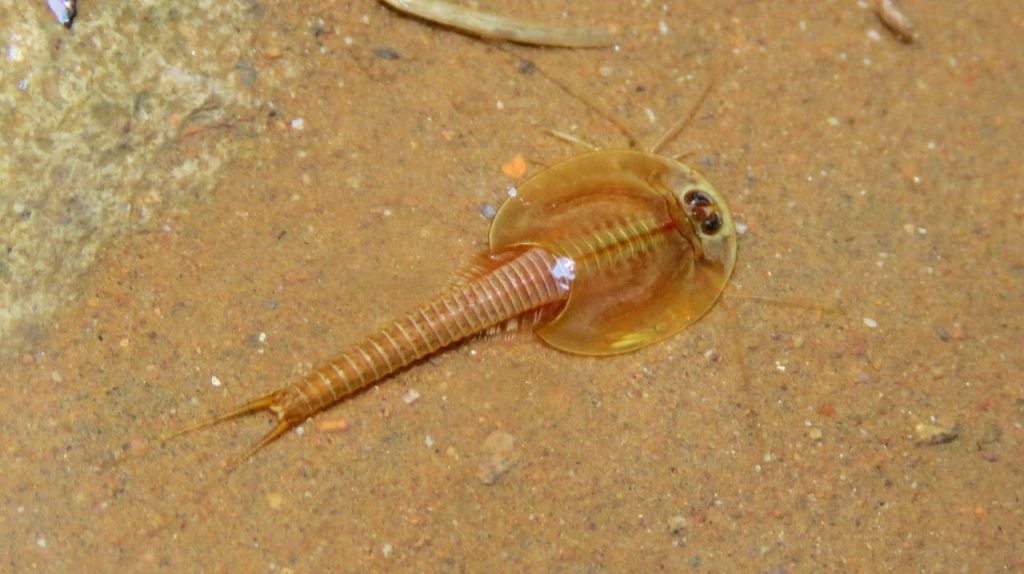Shield Shrimp or Tadpole Shrimp Triops spp.
Triops, is a genus of small freshwater crustacean classified under the order Notostraca. This order includes a single family named Triopsidae. Historically, the Triopsidae family was divided into 11 species across two genera, Triops and Lepidurus. However, recent DNA analysis suggests that there may be more species.
The name “Triops” is derived from Latin, meaning “three eyes,” referring to these creatures with two compound eyes and a simple third eye in close proximity. Notostraca are considered living fossils, with fossils dating back around 300 million years, and little morphological changes have occurred over 250 million years (Triassic period).
Triops inhabit freshwater seasonal ponds in various types of habitats, ranging from forests and savannas to semi-arid areas and deserts. They can also be found in wadis in desert regions when they are filled with water. Their eggs have the remarkable ability to withstand desiccation, remaining dormant until the ponds are filled with water, after which they hatch rapidly. The adult phase lasts for about 90 days.
Triops are widely distributed around the world but are generally rare and common only in specific locations. In Sudan, Triops records are scattered, and they appear to be locally common. They have been recorded in Khartoum State, River Nile State, Gazira State, and Kordofan.
In the book “Biology of Desert” by G.W. Brown, there is an introductory scientific article by J.L. Cloudsley-Thompson describing life in the desert surrounding the Murakhiyat Mountains in Omdurman, where two species of Triops have been recorded. These species are Triops cancriformis and Triops granaries. Triops cancriformis is considered one of the oldest living species on Earth (around 200 million years), while Triops granarius is widely distributed in Africa, the Middle East, and Asia, including China and Japan.

